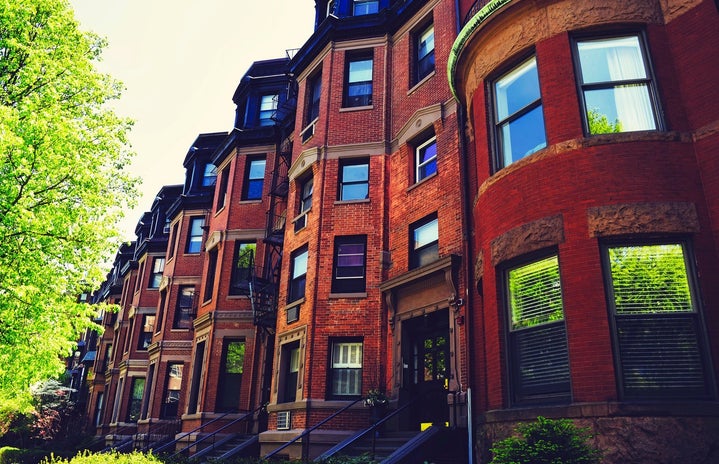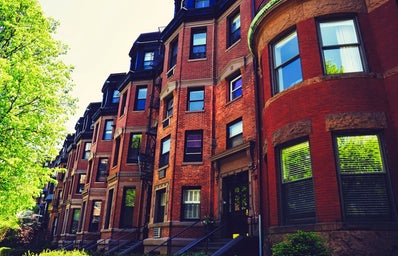On March 15, 2018, the Boston Ballet had its opening night of “Romeo & Juliet.” As a first time viewer of a ballet show performance, I was unsure of what to expect. However, after the performance, I can safely say that it was one of the most captivating, aesthetically pleasing, and magical shows I have ever seen! Misa Kuranaga and Nelson Madrigal in John Cranko’s Romeo & Juliet; photo by Rosalie O’Connor, courtesy Boston Ballet
When I decided to attend the ballet I was excited, but also nervous as I worried I would get bored easily. Instead, I was surprised how much the Boston Ballet focused on the storytelling aspect of their performance: their facial expressions, movements, and the set itself helped the audience follow along with the story. Their dancing was excellent, but it was clear that their goal was not just to dance – it was to truly tell an understandable story with dance being the medium.
The ballet opens with the beginning of a new day at the market where Romeo, a Montague, is declaring his love for Rosaline. As morning continues, the market fills with townspeople, both from the Capulet and Montague rival families, and a brawl breaks out. The movements of the performers during this brawl scene are fascinating – it is clear that every leap, every stumble, and every fall is choreographed and staged perfectly.
Boston Ballet in John Cranko’s Romeo & Juliet; photo by Liza Voll; courtesy of Boston Ballet
The Duke of Verona then appears, breaking up the brawl, and Romeo, Benvolio, and Mercutio, three Montague friends, reluctantly make peace with Tybalt, a Capulet kinsman.
In the next scene, the audience is introduced to Juliet, daughter of Lord and Lady Capulet. After showing delightful affection for her nurse, Juliet receives a ball gown from her mother and learns that she will meet Paris, a Capulet nobleman with whom she is to be betrothed to the next day. During this scene, Misa Kuranaga, the ballerina who plays Juliet, shows an exquisite daintiness and innocence that is generally associated with the character of Juliet. Her movements are delicate and her expressions are lively. The orchestra’s performance also contributes to the charming feeling we receive from Juliet, and this musical theme is repeated during Juliet’s important scenes throughout the ballet.
In the next scene, guests arrive at the Capulet’s masquerade ball and Romeo, Mercutio, and Benvolio sneak in wearing masks. After Juliet and Paris are introduced, they dance together beautifully; it is during this dance that Romeo and Juliet first see each other and fall in love at first sight. It is clear that Juliet is afraid of sharing her feelings for Romeo at first, as shown by her surprised expression and tiptoeing backwards. But she is so swept off her feet by Romeo that she cannot help but let herself love him. Act 1 ends with the iconic balcony scene in which Romeo and Juliet profess their love for each other and pledge to get married the next day. The set for this scene is magical; it shows the lovely moonlight above and the intricate balcony.
Paulo Arrais, Misa Kuranaga, and Florimond Lorieux in John Cranko’s Romeo & Juliet; photo by Liza Voll; courtesy of Boston Ballet
The second act starts with a carnival happening in the town square. Juliet’s nurse brings Romeo a letter from Juliet asking him to meet her in front of Friar Lawrence’s chapel and he becomes ecstatic. Romeo and Juliet get married by Friar Lawrence. In the next scene, Romeo returns to the carnival where Tybalt again tries to incite a fight. Romeo tries to be the bigger man, refusing to fight, but hot-headed Mercutio agrees to fight Tybalt. Mercutio’s cockiness is expressed hilariously by ballet dancer Derek Dunn; Mercutio kisses and flirts with women all while fighting with Tybalt. However, in the end, Tybalt fatally stabs Mercutio. Mercutio’s death scene is sad yet comically drawn-out. Romeo becomes enraged at Tybalt for killing his friend Mercutio and, in the heat of the moment, kills Tybalt before fleeing in despair.
Boston Ballet in John Cranko’s Romeo & Juliet; photo by Liza Voll; courtesy of Boston Ballet
The final act starts in Juliet’s bedroom from which Romeo and Juliet awaken. Romeo bids farewell to Juliet as he has been exiled from Verona as punishment for killing Tybalt. Juliet is grief-stricken that Romeo has to leave and begs him to stay; when Lord and Lady Capulet enter with Paris, Juliet rejects him angrily.
Juliet then asks for Friar Lawrence’s help. He encourages her to drink a potion that will make her appear dead; he says he will tell Romeo so that he can meet her at the tomb. She is averse to the idea at first as she backs away, but agrees that is her best option. Later that night, Juliet takes the sleeping potion; when her family and friends notice she does not wake up, everyone is grief stricken and she is put into a tomb. Romeo never received the message from Friar Lawrence, so his devastation is clear as he hopelessly lifts her and caresses her. After stabbing himself out of grief, Juliet soon awakens and at first feels completely blissful that she is with her Romeo. However, as she realizes that he is not waking up, she too gets into a devastated and grief stricken frenzy. This last moment in which the two show their love for each other and agony for their lover clenched each and every audience member’s heart. The ballet dancers’ acting skills are so believable and captivating!
Paulo Arrais and Misa Kuranaga in John Cranko’s Romeo & Juliet; photo by Liza Voll; courtesy of Boston Ballet
The ballet, of course, ends on the tragic note of Juliet also killing herself as she feels she cannot live without Romeo; the two lay on top of each other as the curtain closes.
I was in awe as I left the theater! I am not a dancer, but I could tell how much dedication and time all the people involved put into this show. It was unexpectedly fascinating and very enjoyable. If you live in the Boston area, the Boston Ballet’s “Romeo & Juliet” is a must-see!

